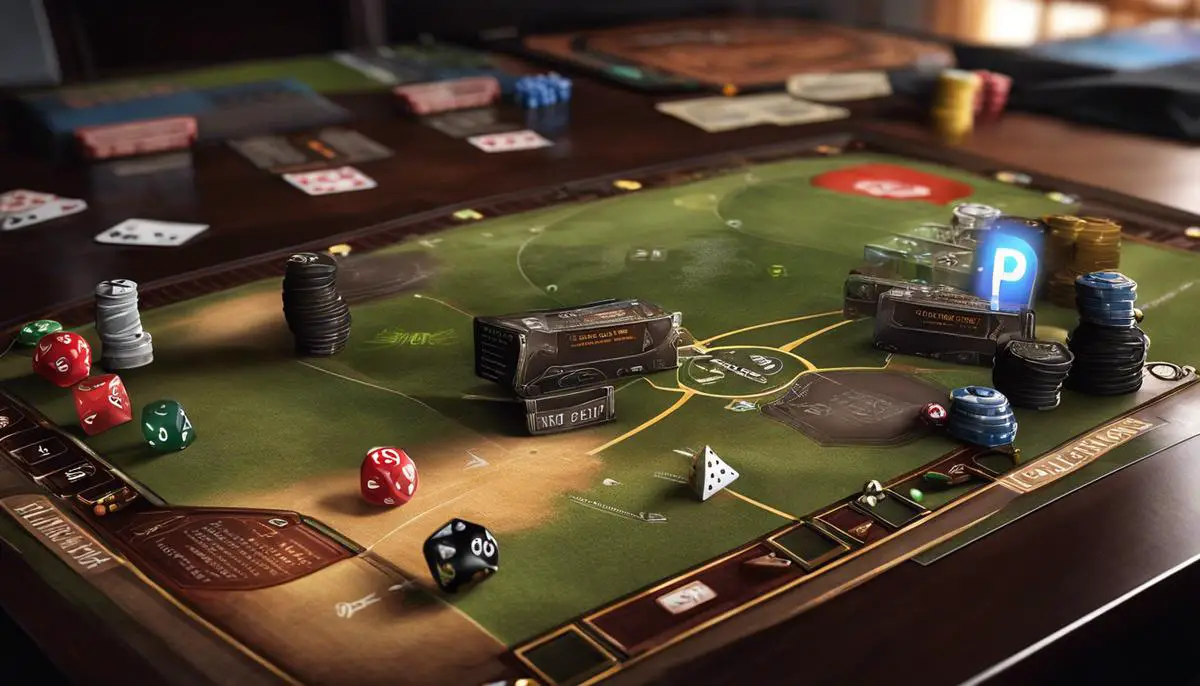Delving into the intricate world of game creation initiates a thrilling journey, where the essential task lies in setting up the game rules. This fascinating process involves a spectrum of elements – ranging from establishing the game’s objective to defining the end-of-game conditions. The structuring of game rules is not merely about drafting the method of play, but also about engineering an experience that is seamless, engaging, and enjoyable. Moreover, clarity and understanding in these rules carry paramount importance to eliminate any chance of confusion during game play. In the same vein, understanding the concept of game balance can play a pivotal role in ensuring an impartial game opportunity for each player.
Understanding the Structure of Game Rules
In the fascinating and continuously-evolving universe of game design, understanding the basic structure of game rules happens to be a pivotal aspect. The intersection of technology and creativity breeds new avenues for immersive and interactive experiences. Delving into the foundation of game rules, it’s best to view them as an ingenious blend of procedural instructions and interactive storytelling.
- Game Objective
- Player Actions
- Rule-set
- Feedback Mechanisms
- Balance Design
Kick-starting any game design endeavor demands clear articulation of the primary objective. A focal goal provides an incentive for players to engage and persevere. This is a pivotal component, whether you’re trying to devise a simple mobile game or an expansive multiplayer universe. It could be as simple as gathering the highest score or as complex as completing a narrative-driven mission.
Following the game objective, the canvas of permissible player actions should be painted. What maneuverabilities are players granted for attaining that objective? Whether it’s controlling a character, manipulating environmental elements, or employing strategic decision-making, clear delineation of potential actions will frame the game experience and ease navigation for the players.
A rule-set is a set of foundational limits and facilitators. These establish the framework of progression, guiding players on what is possible and what isn’t within the gaming universe. It could range from character constraints, environmental boundaries, time-limits, to turn limitations in strategy games. Thus, the rule-set adds an engaging challenge, preventing players from simply breezing through the game, fostering a sense of achievement upon overcome challenges.
Games, inherently, are interactive. Players perform actions and the game reacts accordingly. How do players know their actions are yielding the intended results or that they’re progressing in the game? This is where feedback mechanisms enter into play. Be it scores, progress bars, sound cues, or environmental shift, this engagement layer bridges the gap between player actions and game response, reinforcing the interactive loop.
Last, but crucially, the equilibrium between challenge and achievement ensures sustained player engagement. Too easy, and the game becomes monotonous. Too hard, and it risks pushing gamers away. Game designers must meticulously balance difficulty curves, the reward system, and progress rate to maintain an enjoyable gaming experience.
Integrating these core components, while centering on innovation and cutting-edge technology, breeds immersive and enjoyable games. These basic structural components of game rules not only provide a coherent framework for game design but also aid in crafting engaging player experiences. This goes to show the power of a well-structured compositional framework in churning out game environments that captivate our imaginations and foster our engagement.

Writing Clear and Understandable Rules
Title: Crafting Clear and Comprehensible Gaming Rules: A Comprehensive Guide
When it comes to crafting clear and understandable game rules, precision is paramount. It’s all about creating a framework that promotes strategic choices and provides a user-friendly environment while also avoiding ambiguity. Without repeating the already covered aspects of game objectives, player actions, rule-sets, feedback mechanisms, and balance design, let’s jump straight in and focus on the key elements of clarity, simplicity, and accuracy.
-
Sequential Structure: Start with the basic rules that players will need to know at the beginning of the game, then gradually introduce the more complex rules in the order they’re likely to encounter them. This allows players to learn the game step-by-step, reducing the risk of information overload.
-
Intuitive Organization: Rulebooks should be structured intuitively with a table of contents, clear headings and subheadings. This allows players to easily find the information they need when they need it.
-
Consistent Terminology: It’s crucial to use consistent language in your game rules. Decide on the specific terms you want to use for different game components and actions, and always use the same terms to refer to them.
-
Use of Visuals: Adding diagrams, pictures, or even flow-charts is an excellent method to make your rules more understandable. Visual representations simplify complex instructions and reduce ambiguity.
-
Simplify Language: Ensure your language is simple and straight to the point. Avoid using jargon unless it’s defined clearly in the rules. The goal is to make the rules universally understandable, after all.
-
Examples and Scenarios: Include real game scenarios or examples. Show rather than tell at every possible opportunity. It gives players a concrete understanding and lets them visualize the rule in action.
-
Rule Testing: Finally, have a variety of players read and test your rules independently. Such feedback will highlight any inconsistencies or vague areas that need refinement.
These strategies emphasize effective communication, keeping in mind the cognitive load and accessibility for a diverse range of players. As a developer or enthusiast, perfecting these aspects sets the tone for an enjoyable gaming environment that is inclusive and fun for all players.

Balancing Game Rules for Fair Play
The Next Iteration: Detailed Mechanism Design & Rule Establishment
Having already comprehensively dissected components like the game’s objective, rulesets, feedback mechanisms, and balance design, it is critical to extend the discussion towards more complex paradigms. Together, these pillars construct the broad framework of any game, but the balancing act diving deeper into the gamer’s experience — detailed mechanism design, varied conditioning, narrative integration, advanced failure management, and metric analysis are worth considering.
“Balance” in game designing is a tricky devil. It doesn’t just halt at preventing any player from gaining an unfair advantage; it intersects at providing a fair context, rewarding gameplay, and ensuring the game doesn’t degenerate into a mindless mash of actions.
Detailed Mechanism Design
Scouring deeper into player actions, differentiating between ‘basic’ and ‘advanced’ actions is pivotal. Building advanced mechanisms into the game, unlockable through skill or time, can stave off competitive stagnancy and provide a fairer playing ground.
Varied Conditioning
Carefully choosing variables and how they affect player experience can also result in balance. For instance, in racing games, modifying car speed, traction, or handling can result in varied outcomes despite the same basic actions being performed.
Narrative Integration
Believe it or not, integrating narrative elements into rule establishment can smoothen the learning curve, thus helping to balance. Crafting ‘gaming laws’ as part of the game world does not just make them more palatable; it ensures they’re more intuitive.
Advanced Failure Management
Another salient aspect is managing failure states. Apart from the basic ‘win/lose,’ exploring intermediate stages of victory or defeat can create a balanced atmosphere where actions carry weight but don’t greatly handicap the player, keeping competition alive.
Metric Analysis
Collecting gameplay data, either through beta testing or machine learning, can help analyze player choices, strategies, and popular mechanisms. This can lead to a clearer understanding of what’s working, what’s not, and consequently, what needs balancing.
Remember, here lies the participatory nature of gaming—keep checking and altering the rule-set to ensure ‘fair play.’ Game balancing is an art that functions iteratively. It’s about watching, learning, analyzing, and then repeating the process until the challenging becomes gratifying, the frustrating becomes enticing, and the game becomes a truly immersive experience. Happy gaming!

The process of crafting game rules is a meticulously layered process. It needs a strategic mindset and a keen eye for detail to develop instructions that are easy to understand, while also ensuring fair play. Mastering this art can empower you to create games that not only engage players but also provide a battlefield, where every participant has an equal shot at victory. Juggling the numerous dynamics of game rule writing can certainly be challenging, but with comprehension and practice, one can carve rules that are comprehensive, clear, and cleverly balanced, thereby laying the foundation of a game that stands out in the vast sea of competition.
